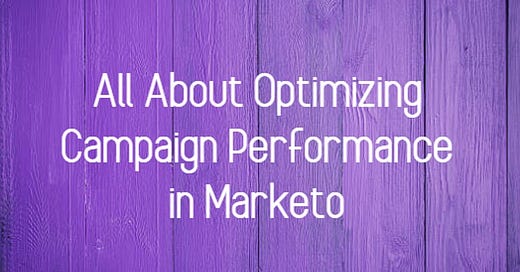All About Optimizing Campaign Performance in Marketo
Understanding how Marketo prioritizes and processes campaigns are crucial for maximizing efficiency and achieving your marketing goals. Let's explore the factors influencing campaign speed and strategies to accelerate your Marketo campaigns.
Prioritizing Campaigns:
Marketo operates on a priority-based system, where high-priority campaigns take precedence over others in the execution queue. These campaigns are processed in the order they are added, ensuring timely delivery and action. In contrast, low-priority campaigns are queued accordingly and executed after higher-priority tasks. Notably, if a new high-priority campaign comes, it leapfrogs to the front of the line, ensuring urgent messages are promptly disseminated.
Factors Affecting Execution Time:
Campaign execution time varies based on several factors:
Priority: The priority assigned to your campaign dictates its position in the execution queue. You can override the default priority of a trigger campaign by using Marketo’s OOTB Campaign Priority Override feature.
Smart List Complexity: The complexity of smart list filters influences processing time. Refer to the smart list best practices here.
Flow Steps: The number and complexity of flow steps within the campaign contribute to execution time. Certain steps, such as sending emails or syncing leads, may require more resources.
Choice Complexity: Complex decision trees within flow steps can prolong processing time.
Qualified Records: The number of records qualifying for the campaign impacts processing resources.
Optimizing Campaign Performance:
To enhance the speed and efficiency of your Marketo campaigns, consider the following strategies:
Prioritize Essential Flow Steps: Place critical flow steps, such as sending emails or triggering alerts, at the forefront of your campaign. This ensures vital communications are prioritized for immediate action.
Avoid "Wait" Steps: Minimize or eliminate "Wait" steps, especially in triggered campaigns, as they lower prioritization. Utilize the batch campaign scheduler for delaying batch campaigns and optimizing resource allocation.
Strategize Wait Times: If "Wait" steps are unavoidable, keep wait times under 5 minutes to prevent downstream flows from experiencing low priority.
Batch and Trigger Separation: Recognize the distinction between batch and trigger campaigns, as they operate in separate queues. Understanding their nuances aids in efficient resource allocation.
By understanding Marketo's campaign prioritization system and implementing optimization strategies, you can ensure your campaigns run smoothly and in the order you want.



